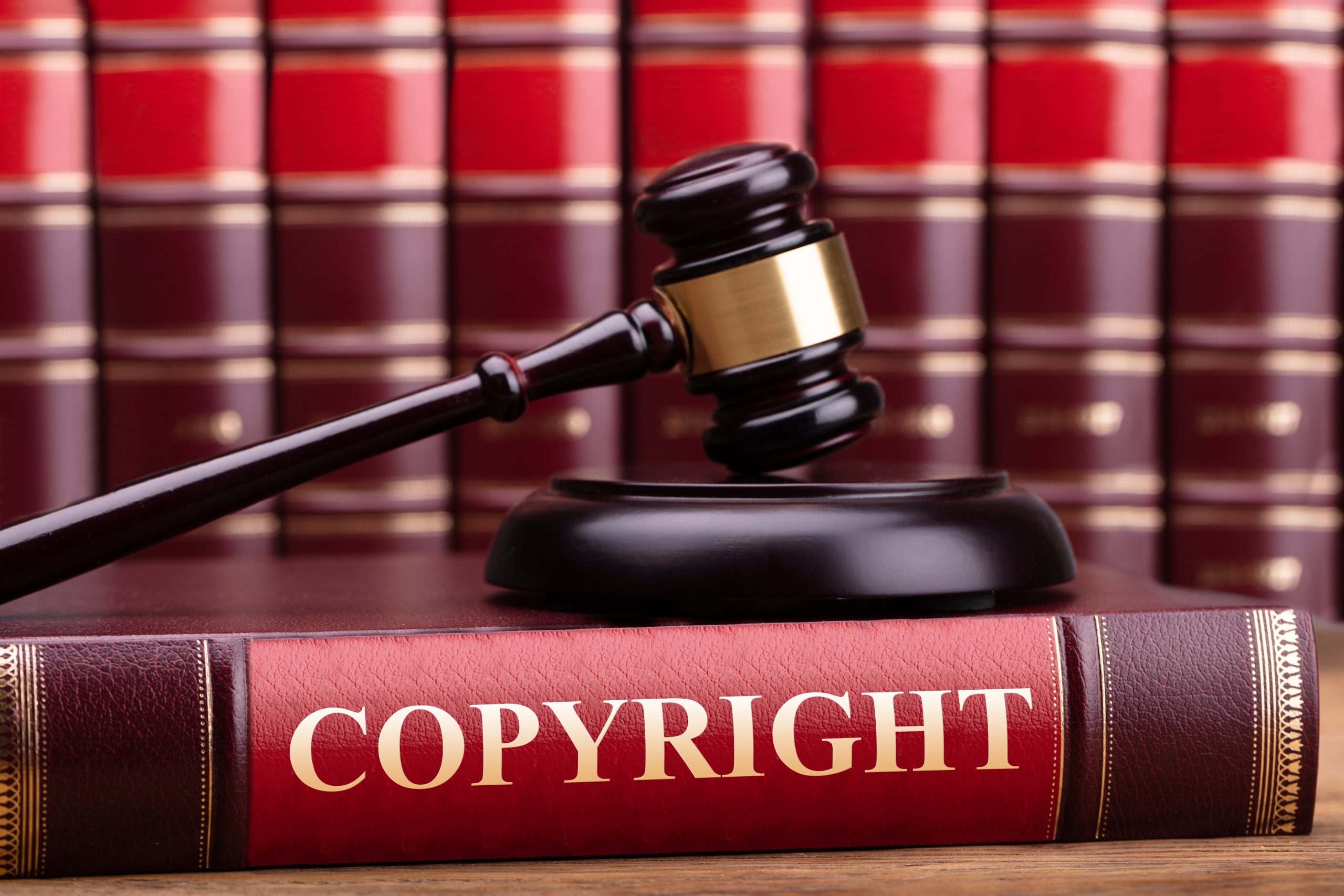“If the district court’s approach is upheld, it would undermine the fundamental purposes of copyright registration and would leave copyright owners—especially the many creators who operate independently as small businesses—in an untenable position when they try to enforce their rights against infringers.”
Editor’s note: the author submitted an amicus brief supporting SAS Institute in this case.
 SAS Institute is a software company in North Carolina. Founded in 1976, it employs thousands of people in the United States and thousands more around the world. World Programming, Ltd. (WPL) is a British company that decided to build a clone of SAS’s popular analytics software and, as several courts have found, broke the law to do it. After a decade of litigation across two continents and an unpaid multi-million-dollar judgment, the parties are once again in court. This time, however, WPL’s arguments pose grave dangers to all owners of other copyrighted works.
SAS Institute is a software company in North Carolina. Founded in 1976, it employs thousands of people in the United States and thousands more around the world. World Programming, Ltd. (WPL) is a British company that decided to build a clone of SAS’s popular analytics software and, as several courts have found, broke the law to do it. After a decade of litigation across two continents and an unpaid multi-million-dollar judgment, the parties are once again in court. This time, however, WPL’s arguments pose grave dangers to all owners of other copyrighted works.
WPL did not try to compete with SAS by building a different or better product. Instead, it ordered copies of SAS’s products under the guise of an educational license, but with the true intent to reverse-engineer and copy key elements, including the selection and arrangement of its outputs, and even the manuals licensed users receive from SAS. The result is that WPL produced a clone, taking the exact same input and producing the exact same output that SAS does. Avoiding the years of investment and fine-tuning that SAS undertook to create its market-leading software, WPL undercut SAS’s price in the market and lured away SAS’s customers.
A Mixed Bag from the Courts
In 2009, SAS sued WPL in Britain, where it won a limited judgment that WPL infringed on SAS’s copyrights in the manuals that accompany its software. But many WPL customers are in the United States, so SAS sued here, too. In litigation in federal court in North Carolina, the court held that WPL breached its license with SAS, fraudulently induced SAS to provide materials WPL intended to copy and engaged in unfair and deceptive trade practices. That resulted in a jury award of over $79 million for SAS. In 2017, the U.S. Court of Appeals for the Fourth Circuit affirmed the ruling. But the story was far from over.
When SAS sought to enforce part of the judgment in England, the English High Court declined to recognize it, and even purported to forbid SAS from filing suit to collect it in the United States. In response to WPL’s evasions, SAS sought and obtained an injunction to prohibit WPL from licensing its software to new customers in the U.S. On appeal, the Fourth Circuit again affirmed for SAS, stating: “WPL cannot participate in the U.S. market, violate U.S. law, and expect to avoid the consequences of its conduct.” To date, however, WPL has paid only a tiny fraction of what it owes.
The case in North Carolina did not resolve SAS’s copyright infringement claims, so SAS brought a copyright suit in Texas district court. The Copyright Office granted registrations for SAS’s computer programs, certifying they are protected under American copyright law. Nonetheless, WPL claimed what it copied was not protected by copyright law, and the district court accepted those assertions with virtually no analysis. Instead, the court essentially ignored the copyright registrations and required SAS to explain why its software was immune from a grab-bag of doctrines WPL raised and re-prove the copyrightability of its works. This would be like telling a homeowner that the deed to their property was all well and good, but now they need to prove that what they own really is a house. And when the court wasn’t satisfied with SAS’s answer, it dismissed the case.
Big Implications for Copyright Owners
SAS rightly appealed, and the case will be heard by the U.S. Court of Appeals for the Federal Circuit, which has jurisdiction because the complaint included patent claims. Because the district court got the law so completely wrong, I co-authored an amicus brief to the Federal Circuit. If the district court’s approach is upheld, it would undermine the fundamental purposes of copyright registration and would leave copyright owners—especially the many creators who operate independently as small businesses—in an untenable position when they try to enforce their rights against infringers.
For the sake of creators and copyright owners across the country, as well as SAS, the Federal Circuit should reverse the district court’s misapplication of copyright law and allow the infringement suit to go forward. It is long past time that WPL be held accountable.
Image Source: Deposit Photos
Author: AndreyPopov
Image ID: 211210396

![[IPWatchdog Logo]](https://ipwatchdog.com/wp-content/themes/IPWatchdog%20-%202023/assets/images/temp/logo-small@2x.png)

![[[Advertisement]]](https://ipwatchdog.com/wp-content/uploads/2024/04/Patent-Litigation-Masters-2024-banner-early-bird-ends-Apr-21-last-chance-938x313-1.jpeg)
![[Advertisement]](https://ipwatchdog.com/wp-content/uploads/2024/04/Patent-Litigation-Masters-2024-sidebar-early-bird-ends-Apr-21-last-chance-700x500-1.jpg)

![[Advertisement]](https://ipwatchdog.com/wp-content/uploads/2021/12/WEBINAR-336-x-280-px.png)
![[Advertisement]](https://ipwatchdog.com/wp-content/uploads/2021/12/2021-Patent-Practice-on-Demand-recorded-Feb-2021-336-x-280.jpg)
![[Advertisement]](https://ipwatchdog.com/wp-content/uploads/2021/12/Ad-4-The-Invent-Patent-System™.png)







Join the Discussion
6 comments so far.
Bob Zeidman
August 31, 2021 08:47 pmRegistering a copyright is just a placeholder–there is no examination performed to determine whether the materials are actually copyrightable. The plaintiff must show that their material is copyrightable, copying occurred, and that that what was copied is substantial. It’s the plaintiff’s burden.
J. S. Greenfield
August 27, 2021 01:10 pmSomething seems like it is missing here.
WPL did not try to compete with SAS by building a different or better product. Instead, it ordered copies of SAS’s products under the guise of an educational license, but with the true intent to reverse-engineer and copy key elements, including the selection and arrangement of its outputs, and even the manuals licensed users receive from SAS. The result is that WPL produced a clone, taking the exact same input and producing the exact same output that SAS does.
This makes it sound as if what’s being asserted is not copyright infringement in the form of copying software, but in the form of copying a functional design embodied in the software–something similar to APIs, but this sounds like it doesn’t go so far as to actually be a compatible API.
Granted, I am far from an expert, but it seems not at all obvious that a registration of the software should evidence the copyrightability of such.
Then in the amicus brief:
WPL therefore produced ample evidence that unprotectable elements exist within and as a part of the SAS System, identifying many “species of unprotectability” contained in the asserted works. Once a defendant establishes that at least some of the material is not entitled to protection, the burden shifts back to the plaintiff to “face[ ] the manageable task of responding to the appropriately narrowed issue” and combat the allegations. This may occur either by showing what defendant alleges as not protectable actually is entitled to protection, or by coming back and showing that there are remaining and identifiable protectable elements that defendant copied.
This makes it sound as if the court didn’t reject a presumption of copyrightability for the work as a whole, but rather, concluded that defendants had made a prima facie showing that the elements asserted to have been copied were not copyrightable. In that case, is it not quite reasonable to expect the plaintiff to either defend that the copied elements actually are copyrightable, or to assert other copyrightable elements that have also been copied?
Richard Henry Abramson
August 23, 2021 12:41 pmThis article doesn’t contain information sufficient to evaluate it’s assertions. Editors?
TFCFM
August 23, 2021 10:43 amA lot of reading to get to the apparent “meat” of the matter:
Article: “WPL claimed what it copied was not protected by copyright law… the court essentially ignored the copyright registrations and required SAS to explain why its software was immune from a grab-bag of doctrines WPL raised and re-prove the copyrightability of its works… when the court wasn’t satisfied with SAS’s answer, it dismissed the case.”
Last I checked, registration of a copyright doesn’t have the legal meaning that “anything and everything the registrant claims to be covered must be assumed to be covered.”
I haven’t analyzed the nuts and bolts of this case, but there seems to me not the slightest thing improper about the court requiring a registrant to demonstrate eligibility of assertedly-covered subject matter before drawing a conclusion regarding infringement — all the more so when/if (as I presume happened here), the accused infringer raises at least colorable issues regarding eligibility.
Anon
August 23, 2021 09:55 amCurious as to the view of possible impacts form the Fair Use expansion related to the recent Google v. Oracle battle…
https://www.supremecourt.gov/opinions/20pdf/18-956_d18f.pdf
not the judge
August 22, 2021 09:57 pmWowza. A seven-page “introduction” that is just argument with bullet points and bold-italics! That’s an approach to avoid. Even so, Appellant has a strong case here.